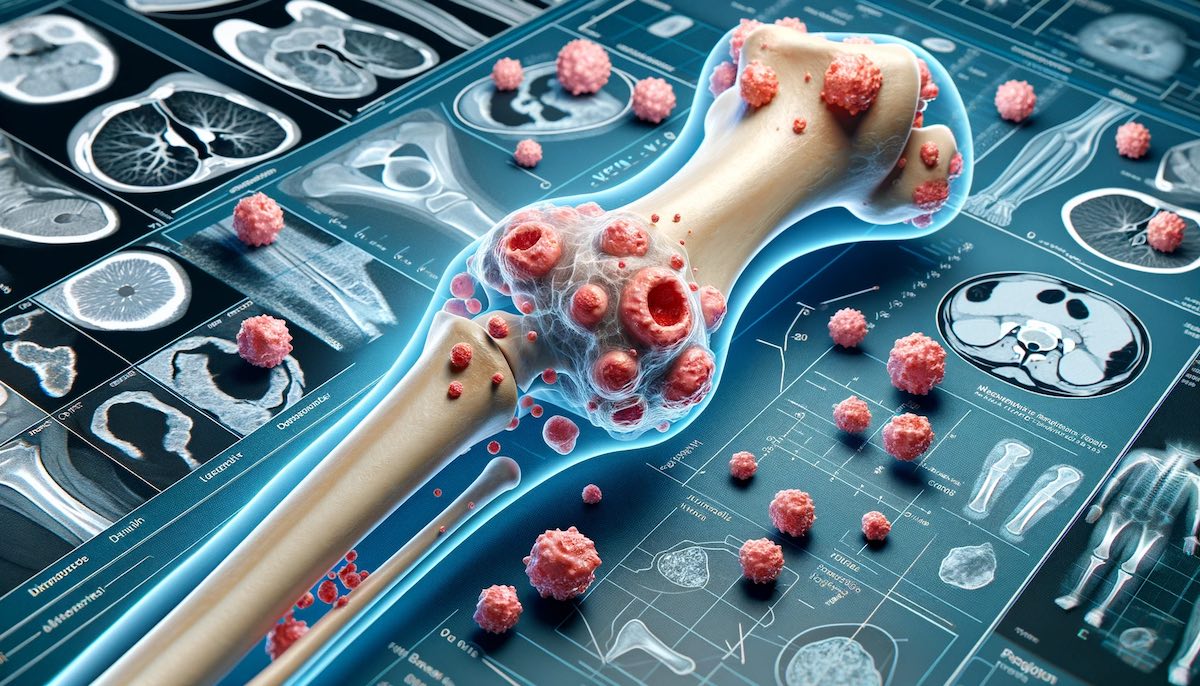Ewing’s Sarcoma: Symptoms, Diagnosis, and Treatment

Ewing’s Sarcoma, a rare type of cancer that affects mostly children and adolescents, requires increased awareness for early detection and effective treatment. This article provides a comprehensive overview of Ewing’s Sarcoma, including its symptoms, diagnostic procedures, and treatment options to educate and inform patients, families, and caregivers.
What is Ewing’s Sarcoma?
It is a rare and aggressive form of cancer that develops in the bones or the soft tissue around the bones. It is most commonly diagnosed in children and young adults and is slightly more prevalent in males than females.
Symptoms of Ewing’s Sarcoma
The symptoms of Ewing’s Sarcoma can vary but often include:
- Pain, swelling, or tenderness near the affected area.
- A lump or mass that can be felt through the skin.
- Fever and fatigue.
- Unexplained weight loss.
- Bone fractures with no clear cause.
Causes and Risk Factors
The exact cause is not well understood. However, it is believed to involve genetic mutations, although these mutations are not inherited but occur after birth. There are no known lifestyle or environmental risk factors.
Diagnosing Ewing’s Sarcoma
Diagnosis of Ewing’s Sarcoma typically involves a series of steps:
- Medical history and physical examination.
- Imaging tests, such as X-rays, MRI, CT scans, and PET scans, to determine the location and size of the tumor.
- Biopsy, where a sample of the tumor is removed for laboratory analysis.
Treatment Options for Ewing’s Sarcoma
The treatment for Ewing’s Sarcoma often involves a combination of therapies, which may include:
- Chemotherapy: To shrink the tumor and kill cancer cells.
- Surgery: To remove the tumor. In some cases, limb-sparing surgery may be possible.
- Radiation therapy: Often used in conjunction with surgery and chemotherapy, especially if the tumor cannot be completely removed surgically.
RELATED POSTS
The Importance of Early Detection
Early detection is critical for successful treatment. Awareness of the symptoms and prompt medical attention if these symptoms are observed can lead to early diagnosis and a better chance of effective treatment.
Get a Medical Opinion
Fill out the form and we will contact you shortly.
The Vital Role of Specialized Medical Expertise
In managing, the expertise and specialization of the medical team are paramount. This rare and complex cancer requires accurate diagnosis, which can be challenging due to its similarities with other types of tumors and diseases. Specialists in pediatric oncology or oncologists with experience in sarcomas are crucial for correctly interpreting diagnostic tests and determining the most effective treatment approach. Their in-depth understanding of its behavior and response to various treatments significantly influences the success rate of the treatment plan. Additionally, these specialists can navigate the intricacies of combining multiple treatment modalities, such as chemotherapy, surgery, and radiation, while minimizing potential side effects. Access to experienced doctors in specialized medical centers also ensures that patients benefit from the latest advancements in cancer treatment, including emerging therapies and clinical trials, enhancing the likelihood of a successful outcome.
Global Access to Specialized Treatment for Ewing’s Sarcoma
In today’s interconnected world, accessing specialized treatment has become increasingly feasible, regardless of geographic location. Advances in global healthcare and medical tourism have made it easier for patients and their families to seek care from leading oncologists and state-of-the-art medical facilities across the globe. This accessibility is particularly crucial for rare and complex conditions like Ewing’s Sarcoma where specialized expertise and advanced treatment options can significantly impact outcomes. The ability to travel for healthcare ensures that patients have access to the latest therapeutic techniques, comprehensive care and participation in clinical trials that might not be available in their home country. Moreover, digital communication platforms and telemedicine services have further bridged the gap, allowing for remote consultations and follow-ups with top medical professionals worldwide.
Frequently Asked Questions About Ewing’s Sarcoma
It is most commonly diagnosed in children and adolescents, typically between the ages of 10 and 20. It is relatively rare in adults.
It is a specific type of sarcoma that primarily affects the bones or nearby soft tissue. It is known for its aggressiveness and the tendency to spread more rapidly than some other types of bone cancer.
The prognosis can vary widely depending on factors like the stage of the cancer at diagnosis and how well it responds to treatment. With early detection and comprehensive treatment, many cases can be successfully managed.
Long-term effects can include physical challenges related to surgery, such as limb function, as well as potential impacts from chemotherapy and radiation, like fertility issues or the risk of secondary cancers. It’s important for survivors to have ongoing health monitoring.
Conclusion
Ewing’s Sarcoma, though rare, is a serious condition that requires prompt and aggressive treatment. Advances in medical science have improved the prognosis for many patients with Ewing’s Sarcoma. Ongoing research and clinical trials continue to seek more effective treatments with fewer side effects.
Contact Information
- WhatsApp: +90 541 469 11 94
- Email: [email protected]
We connect you with top medical specialists and provide comprehensive support to optimize your healthcare decisions. Empowering you to make informed choices for a healthier futu
Get a Medical Opinion
Fill out the form and we will contact you shortly.
